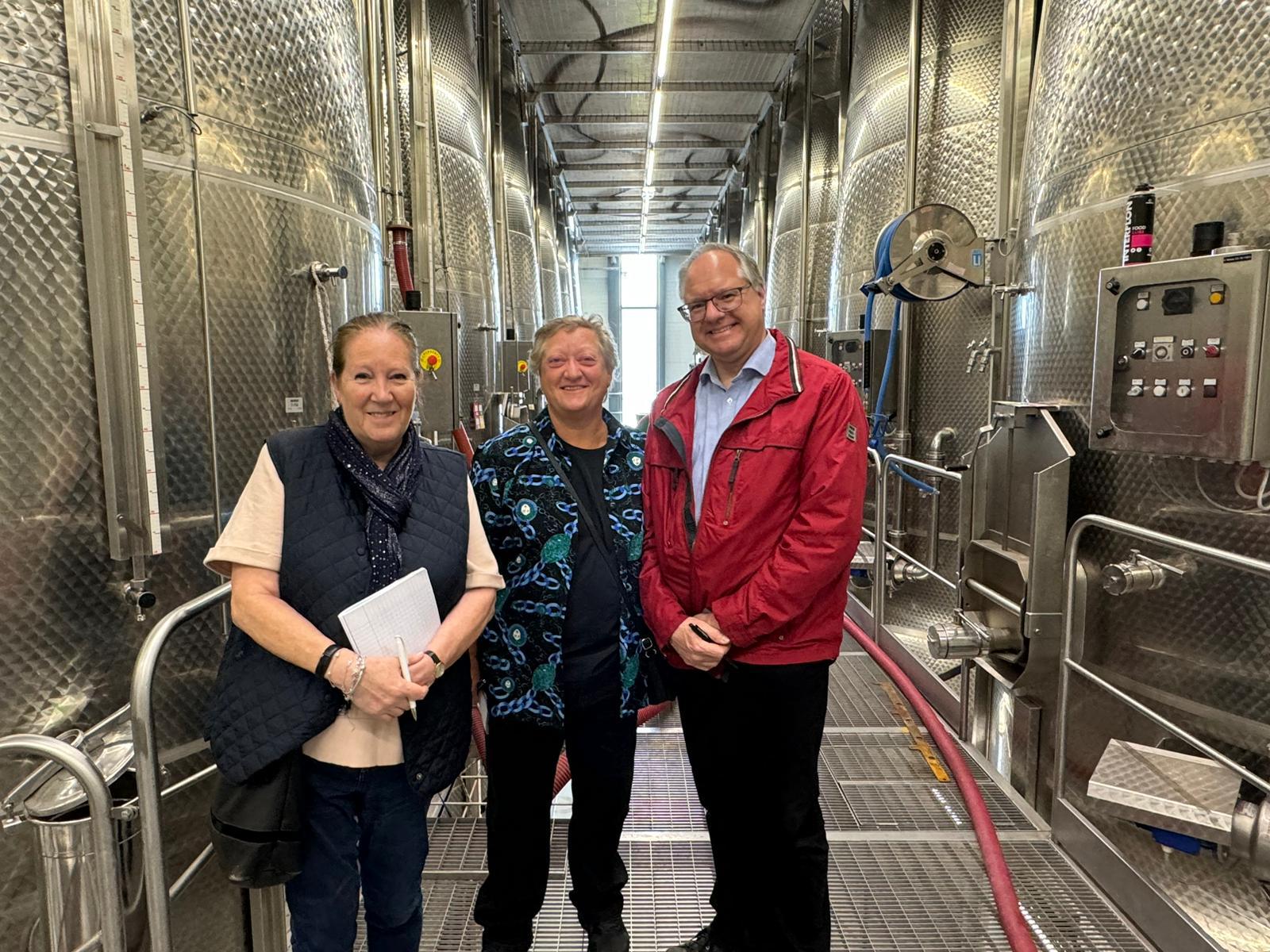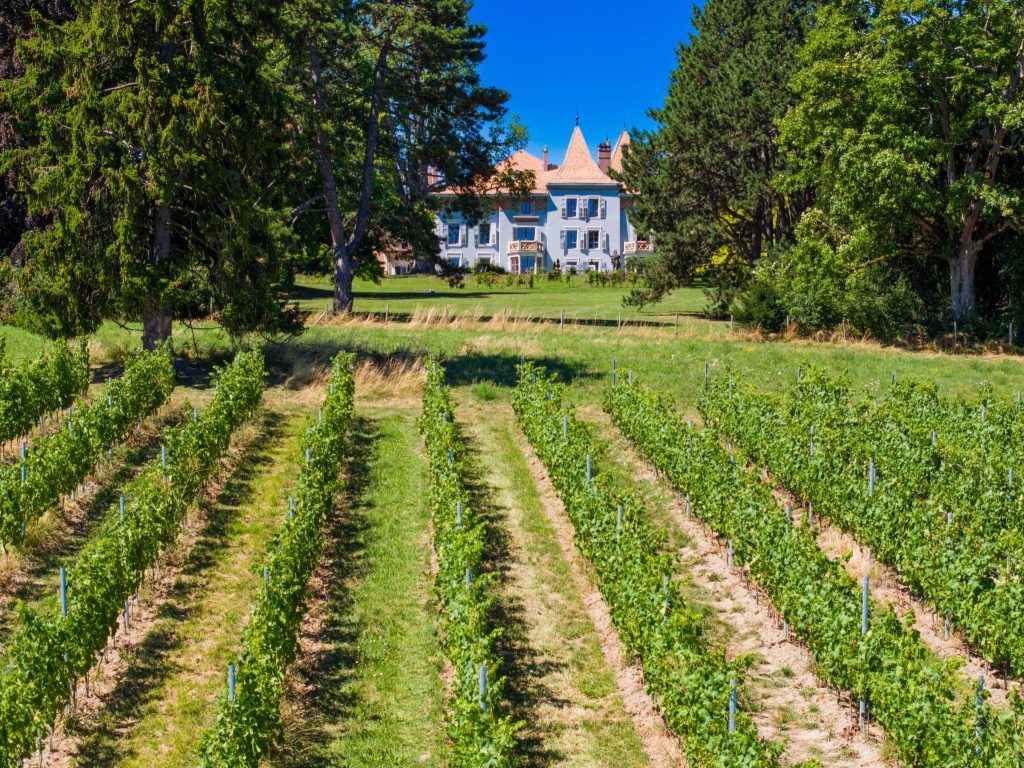Sue Eames discovers that the Swiss wine scene isn’t solely about Chasselas, far from it in fact, and is spoilt for choice with a plethora of exciting indigenous varieties, crossings and PIWIs, to choose from.
Judging in any wine region is always a great opportunity to visit local wineries and explore the latest trends, and our trip to Le Mondial du Chasselas in Aigle, Switzerland, in late May was no exception.
Along with great friends and fellow Circle of Wine Writers members, Vivienne Franks and Markus Hungerbühler, we stopped off at cooperative winery Cave de la Côte in Tolochenaz, Morges, in the Vaud, to meet the head oenologist, Rodrigo Banto, who came over from Chile 21 years ago. We visited the state-of-the-art winery with its space-saving, double-layered fermentation tanks, automatic batonnage and the Oxoline barrel storage system that allows each barrel to be easily removed from the rack.
Of course, we also tasted and talked about some wonderful wines, in particular Chasselas and the disease resistant PIWI crossings Divona, Galotta and Divico. Situated on the slopes of Lac Leman (Lake Geneva), the 450ha of vineyards are managed by 300 winegrowers and are home to over 30 different grape varieties from the traditional Pinot Noir, Pinot Gris, Viognier, Muscat and Gamay through Chasselas, Gamaret and Garanoir to Divico, Divina and Galotta.
Of the 220 different wines that are made at this state-of-the-art winery and at the Nyon facility, 25% are made from organically-grown grapes and we were delighted to see that bottles are re-used where possible. We tasted two very different Chasselas. The first, Château d’Echichens (pictured) Grand Cru 2023, from the Duruz family vineyards with fabulous elegant, creamy pear fruit and a nose of white flowers. The second, Château La Bâtie Vinzel Grand Cru 2022, from the de Cormis family, showed lovely richness and volume.
For me, the highlight was tasting the wines made from crossings developed at the Agriscope Research Centre in Pully (in the Swiss Lavaux region) in the 80s and 90s. Firstly, Divona (a recently created white grape crossing of Gamaret and Bronner) Cuvée XC 2023. In its 5th year of production, and harvested early, this wine doesn’t go through malolactic fermentation, but 50% is matured in oak giving nice acidity and slight nuttiness on the palate with notes of lime and pineapple.
Then, Galotta, a red variety crossing of Ancelotta and Gamay (1981) used for the Cave de la Côte Selection Escargot Rouge 2021, in which it is blended with Pinot Noir. The wine had a very deep colour, firm tannins and, like Divico, the ability to withstand 16-18 months in barrel.
And last, but very much not least, on to the main event – Divico – a red grape crossing of Gamaret & Bronner, created in 1996, and which Cave de la Côte is renowned for. We were treated to a vertical tasting of the Cuvée XC 2023, 2022, 2021 and 2020 of these wines – the 2023 with notes of cherry, blackberry and blueberries overlaid with vanilla; the 2022 with the same fruit notes but very savoury due to a dry year with stress on the vine; the 2021 with lovely acidity, fruit and great complexity and length; and the 2020 which still had fresh ripe black fruit with great acidity and silky tannins
Great to get a glimpse of what the future of the Swiss wine world holds, and also to learn that Yotes Court in Kent, UK are also growing Divico, which is very well adapted to the UK climate.


